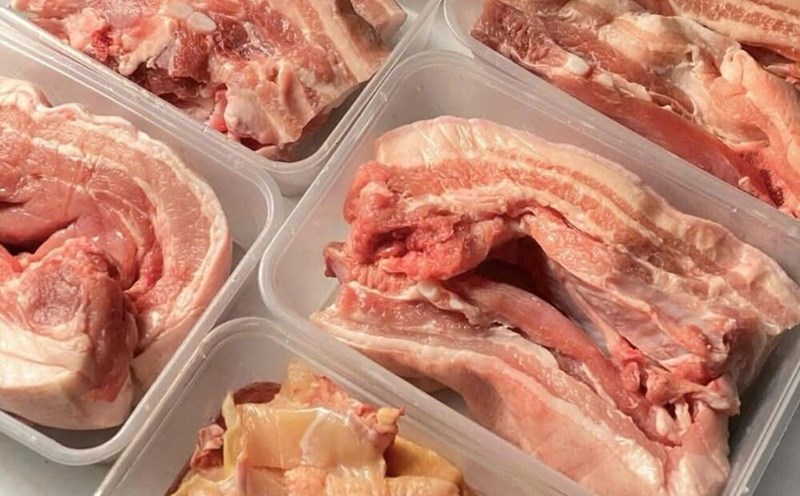Pork is a familiar dish in Vietnamese meals. However, currently, the sale of sick pork and poor quality meat is happening in many places. If you are not careful when choosing to buy, consumers can eat meat that is harmful to their health.
Here are the signs that housewives should be careful to distinguish between delicious meat and sick pork, recommended by foreign experts:
Look at the color of the meat
The delicious pork is often light pink, light, fresh, not dark or mushy. Meat from sick pigs often has a gray, unusually dark color or is bright red, not natural.
"Don't just look at bright red and think it's delicious meat. Some types of meat are treated chemically to look beautiful," said Dr John Prescott, a food safety expert at the University of Queensland (Australia).
Meat smell
Fresh meat often has a mild aroma, is not foul, and is not fishy. If you smell a foul, sour or black smell, it is very likely rotten meat or from sick pigs.
Use your hands to press on the meat
The delicious pork will be elastic and not waterlogged or stuck to the hands. If you find the meat soft and chewy or have conical stains, you should avoid buying it because the meat may be water-pumped or no longer fresh.
Observing fat and skin
The fat of healthy pigs is often white, moderately thick, while the skin is thin and soft. In contrast, meat from overweight or sick pigs often has thick fat, yellow or pale white color, thick skin and rough skin.
C chemicals and growth drugs are often concentrated in fat and skin. Therefore, avoid picking items with unusual fat and skin," Dr. Prescott recommends.
Prioritize meat with clear origin
When buying meat at a supermarket or reputable store, choose one with an inspection sticker, clean packaging and clear production location. Avoid buying meat hanging at the market for too long without cold storage.
Choosing clean, safe pieces of meat is not difficult if you pay attention. Eating and drinking is daily, so careful choices will help protect the health of the whole family.
Lets be smart consumers. Don't let your delicious appearance fool you," Dr. John Prescott, a food safety expert, emphasized.












